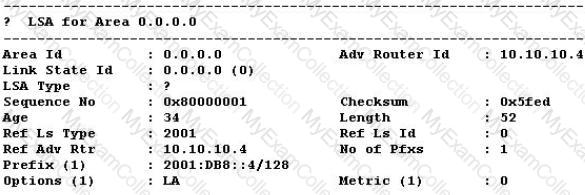Click on the exhibit.
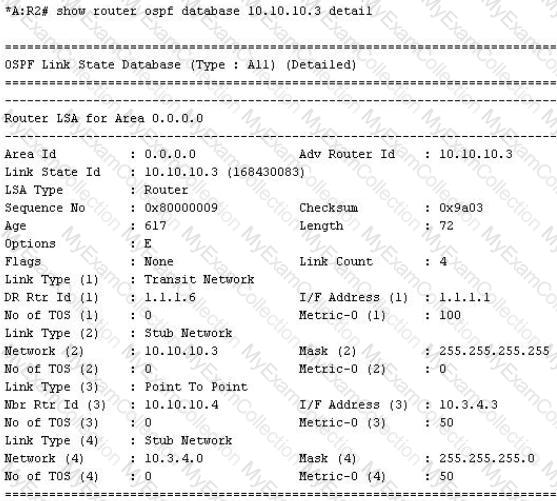
Given the contents of the Router LSA, which of the following best describes the local topology of the router?
Which of the following route types must be manually configured and will not re-route traffic when a link failure occurs in its path?
If the OSPF reference bandwidth is set to 1000 Gbps. what is the cost of a 1 Gbps interface?
Which type of LSA packets describe external routes originated within an NSSA area, and to what type are they converted to at the ABR?
Two IS-IS routers are exchanging Hello packets with different authentication types. Which of the following is TRUE?
Click on the exhibit.
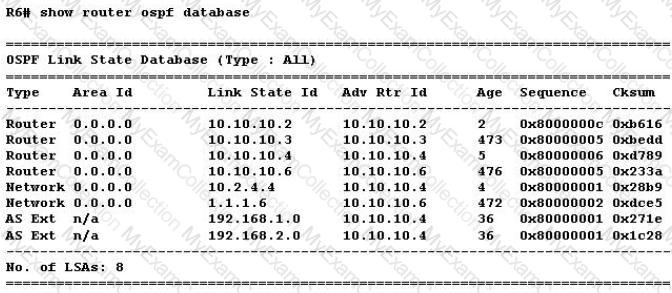
Given the output shown, which router is the ASBR in this network?
A router is configured with the command "configure router ecmp 4". There are two best paths to a given destination with an equal cost in the IGP. Which of the following best describes the handling of traffic to this destination?
Which of the following best describes the actions after an IS-IS router receives on a broadcast interface, a newer LSP than the one in its database?
Click the exhibit button.
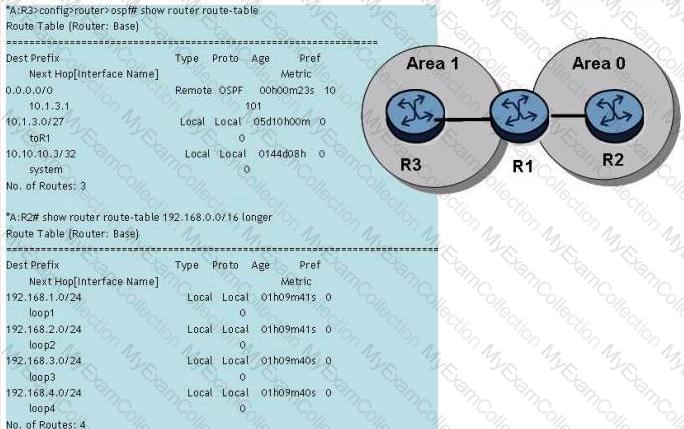
Given the topology and the route-tables shown, which of the following is most likely to be the configuration on router R1?
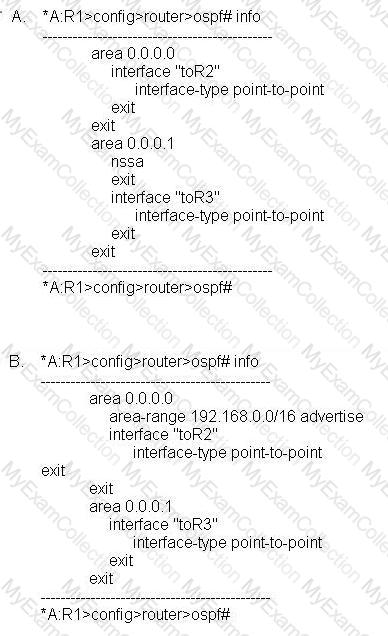
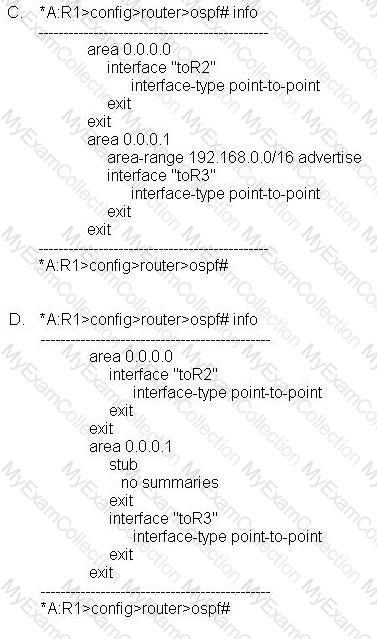
On which type of IS-IS router is summarization most likely to be configured?
Refer to the exhibit below. IS-IS IPv6 routing is configured in the network with globally routed addresses as shown. How many routes will R4 have in its IPv6 route table?
Click the exhibit button.
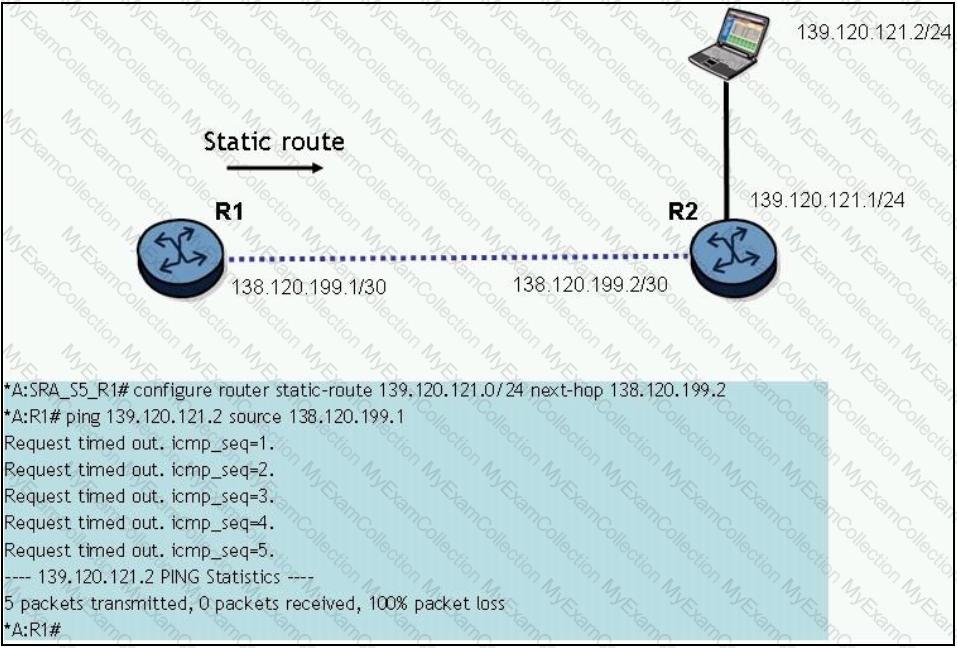
A static route has been configured on router R1 to reach the PC at 139.120.121.2. However, as shown in the exhibit, the ping fails. What is the most likely cause of the problem?
When multiple routing protocols offer a route for the same prefix, what part of the router is in charge of deciding which route to make active?
Which of the following statements regarding the election of the designated router (DR) by OSPF routers are true? (Choose two)
What command could be used to verify proper configuration of a static route in an Alcatel-Lucent 7750 SR router?
What are the types of networks supported on an Alcatel-Lucent 7750 SR for OSPF? (Choose 2)
What are some of the characteristics of Alcatel-Lucent's implementation of non-stop routing? (Choose two)
Click the exhibit button.
Two neighboring OSPF routers have exchanged the packets shown. What state is the adjacency in?
When redistributing OSPF into RIP V2 what must be taken into consideration for the redistribution to take place?
Click the exhibit button.
What is the command to configure a static route on the Alcatel-Lucent 7750 SR router R1 to reach the network behind router R2?
Which of the following statements regarding area border routers in an OSPF network is true?
When a router receives an IP packet, but does not find a match in the routing table for the destination IP address, what actions are performed by the router?
Click the exhibit button.
For the IS-IS network shown, and assuming point-to-point links, what adjacencies will router R1 establish?
Which of the following cannot be used as a matching criterion in route policy statements?
Static routing will be used in a network between a corporate head office, with many connected networks, and a branch office, with one connection to the head office. Which of the following best describes the likely configuration?
Given the NSAP address of 49.0012.1234.1234.1234.00, what area does the IS-IS router reside in?
Click the exhibit button.
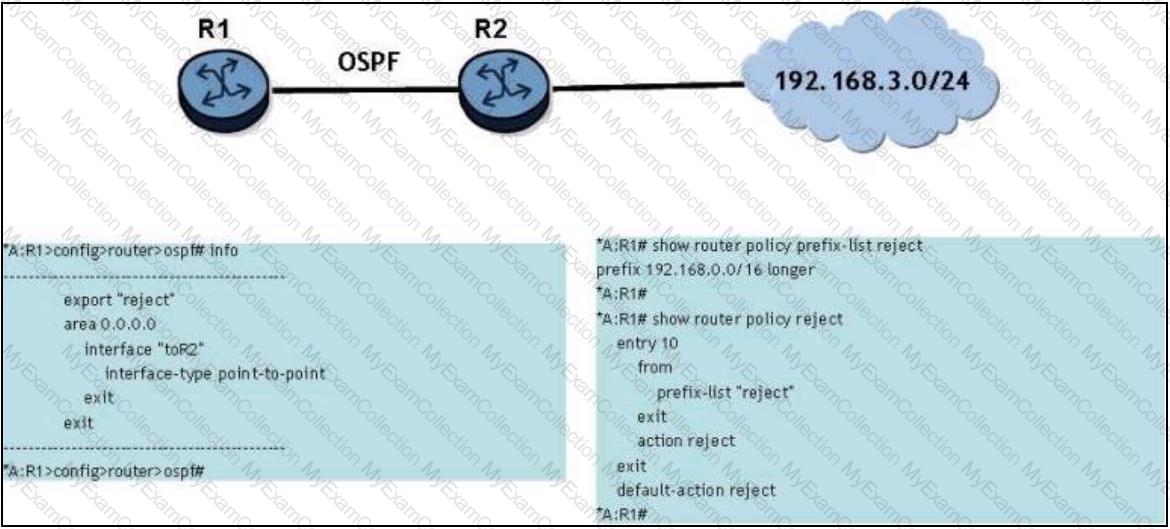
Router R2 advertises the network 192.168.3.0/24 to router R1 via OSPF. A route policy has been constructed to discard the route on router R1; however, it is not working. What is the problem?
If OSPF is used in a multi-area OSPF network, which of the following statements regarding route summarization is true?
Two IS-IS L1/L2 routers are in the same area on the same Ethernet segment. How many adjacencies will be formed between them?
Which of the following is a type of authentication that is supported by OSPF on the Alcatel-Lucent 7750 SR?
Click on the exhibit.
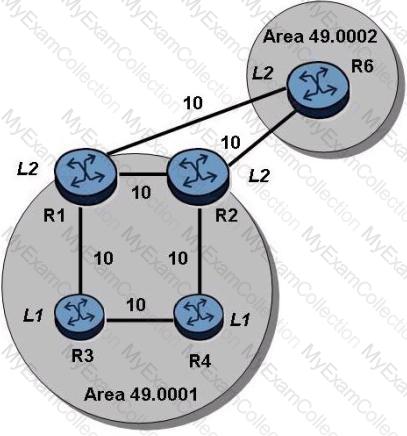
Examine the physical topology of the IS-IS network, the metrics of the links and the levels of the routers. All routers have a system address included in IS-IS.
Which of the following describes the route that router R4 will use to reach the system address of router R6?
Which of the following best describes the actions taken by an IS-IS router after it receives an LSP on a broadcast interface that is newer than the one in its database?
